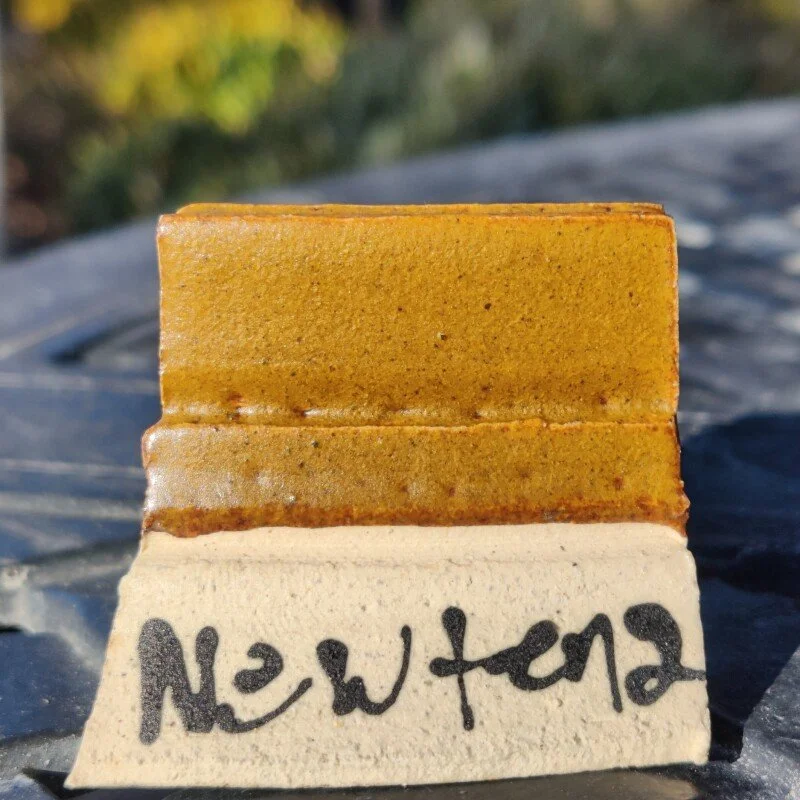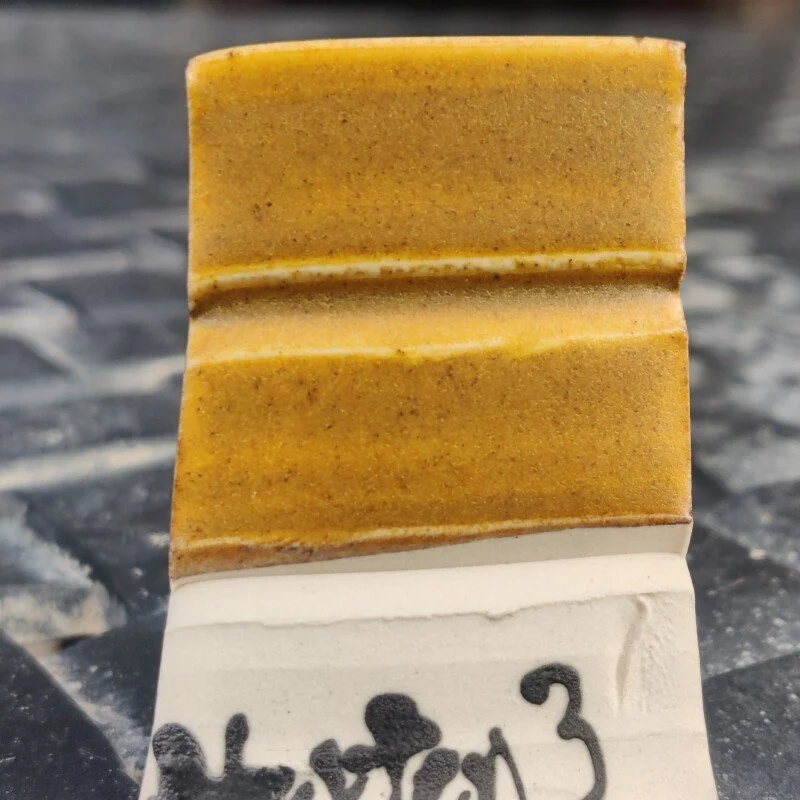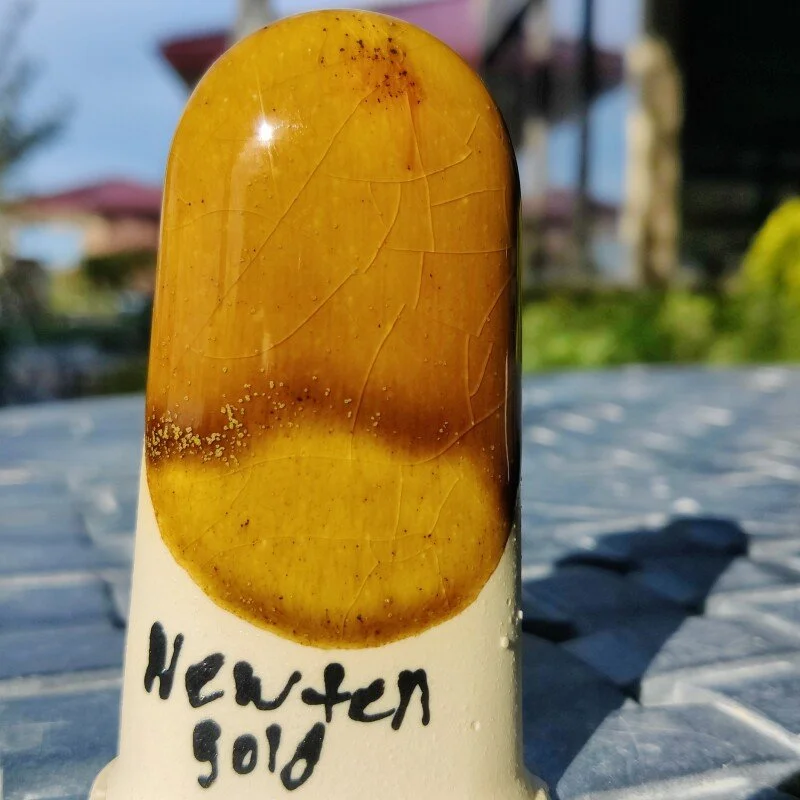Glaze development this month (Tenmoku Gold cone 6 ox)
Over the course of a year I usually try to develop or hone in five glazes or so. I usually release one to patrons, one to glazy, and I keep the others for study. This month I'm trying to redevelop a classic glaze in the ceramic space, Tenmoku Gold. A dark iron glaze with small yellow iron specks. You will note I said redevelop instead of create. This is because the original original recipe is a cone 10 recipe that has been reformulated for cone 6 oxidation over time for people like myself; This is the recipe I have. The cone 6 oxidation recipe is public if you want it. In fact, here.
This recipe comes with a few problems.
#1 it has awwwwwwwful thermal expansion. Most of my clay bodies mitigate cant this and the glaze often ends up crazing as a result. This in turn makes my work weaker as the crazing usually goes down to the clay body.
#2 Gerstley borate is essentially dead if you live in the U.S. Gatta use Frit 3134 or gillespi borate and….. I don't know if this is the place to touch on it but I do not trust Gillespi borate. Something is making it pit and crawl in my test and Tony Hansen ( the owner of Digital fire) did a firing test with Gillespi Borate vs Gerstley borate and it’s doing something weird. It’s on my “Do not use” list of materials.
Link to the Digital fire article https://digitalfire.com/picture/3312
#3 Dear Lord look at that flux ratio. This is the Glaze calculator, which means it counts iron a bit differently from other UMF calculators, but that’s still massive.
#4 A good amount of the recipe has lithium carbonate in it. Which of course means it’s water soluble an moves with the water, getting soaked up by the pours of the clay instead of staying on the outside where it belongs. My work around for this has been to double dip my work. Bu it’s better to just have minerals in our glaze that are not water soluble.
This moves us to my testing. At first I thought I could just use the UMF molar amounts to match the old recipe and it would be all good, but of course it’s never as simple as “make the numbers match, bro”. Lets see me attempts
The reason the flux ratio is so high is because this is an iron crystal glaze. Crystal glazes in general have low alumina and Silica levels. And if you over fire the glaze you get way less crystals, if you underfire them you usually get more crystals, a times you get so many you can’t tell if here are any crystals at all. So what did I do? Did I take a little Silica and alumina away while balancing out the flux to make the glaze even?…. No. I Tanked the Silica and alumina levels just to see if I could bottom out and fin a medium.
I always forgot how much of an effect silica has on a glazes thermal expansion . The old Facebook potter adage to fix crazing is usually something like ( just throw silica in the recipe) Don't balance it, don't change the clay body, font fix the recipe, just throw hella silica in it. Which will probably do more harm than anything else. While “Just throw silica in it “ lack all content and will change the recipe at a base…… it’ll probably accidentally work 1/4th of the time, lol.





